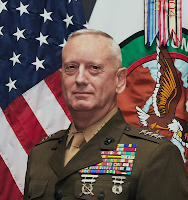
The death of Kim Jong Il, seemed to have taken the Western World by surprise. The viel of secrecy over North Korea allowed the North Koreans to pick their time and their messages concerning the death of one leader and the succession of his handpicked replacement. While the West scurries about trying to figure out what will happen to North Korea, the world’s most secretive country moves forward anointing their new leader.
The December 23, 2011 Wall Street Journal featured an article: “Kim Ki Nam has one of the toughest jobs in North Korea” (http://online.wsj.com/article/SB10001424052970203686204577114193593219330.html). The lead in the article is “The 82-year-old former professor heads the department in North Korea's ruling party responsible for filling North Koreans' minds with awe, devotion and unswerving respect for the dictatorial Kim dynasty.” No doubt multiple government agencies are now preaching the gospel of Kim Jong Eun (photo source AP via the WSJ).
The North Koreans are master propagandists. They have shown their ability to create myths, recast history and seem to be able to mold the thoughts of one of the poorest nations on earth. One of the ways that they have been able to maintain such an ideological grip is because of the ‘lock down’ nature of the society and the government’s almost total control of life north of the 38th parallel.
A key take away for PSYOP/MISO is that OPSEC can be a ‘booster shot’ for campaigns. By shielding the target audience from key facts or events, the launch of an influence campaign can be that much more effective.
This will be my last post until the week of 9 January 2012. To all my readers – the best to you and yours for the Holiday Season and may 2012 be your best year ever!





